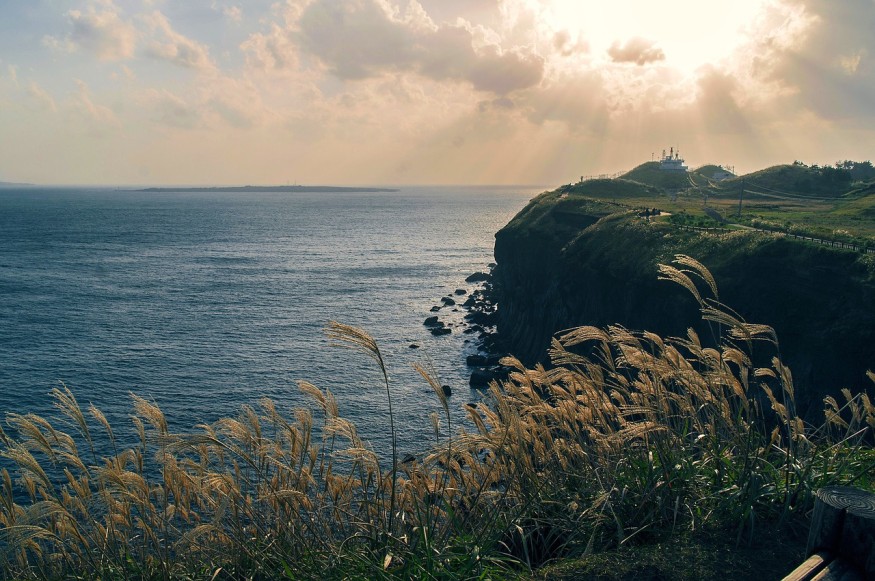South Korea has a serious problem in its hands: it is slowly sinking from sea level rise and other effects of climate change.
Jeju Island's Ecological Woes
Jeju is a popular tourist destination, and starting in 2016, a seaside rock site had to be closed 302 days every year because of the high sea level. According to a travel guide in Seogwipo's Yongmeori Coast, if the sea level will rise more than 50 centimeters by 2050, this trail will be permanently underwater.
There are also other magnified ecological disturbances because of the rising sea level. Jeju Island's Self-Governing Special Provincial Government says that on Mount Halla, the world's largest endangered Abies koreana/Korean fir forest is rapidly losing trees. From 738.3 total hectares in the year 2006, in 2015 it was reduced to 626.
Meanwhile, gulfweed has also been reduced, as well as the sea trumpet, while stony corals have expanded. According to Environmental Preservation Bureau Environmental Policy Division's Yoon Seong-eun, indigenous species are being overwhelmed by foreign species that are tropically adapted.

READ: Malama ai Hawai'i: 40% of O'Ahu Beaches Could Disappear by 2050
Rising Sea Levels
Sea level can be an essential measure of how extensive climate change is. This disaster is on a worldwide scale, with melting glaciers and ice sheets and thermal seawater expansion.
The KHOA or Korea Hydrographic & Oceanographic Agency has monitored this for three decades. It said that the sea level has risen 2.97 millimeters per year within this time period, but the last decade showed a rapid rise on the east and south coasts. Jeju registered the highest at 4.26 millimeters annually.
Greenpeace simulated sea-level rise and determined that by 2030, over three million people in the country will experience nationwide flooding. According to Seoul Greenpeace's Justin Jeong, over five percent of South Korea, or approximately 5,880 km2, will be submerged and affect 3.32 million Koreans in Incheon, Gyeonggi, and Seoul.
Jeong said it will damage the Incheon International Airport's second terminal, worth almost three and a half-billion dollars. It will also damage government infrastructures like Gimpo airport, power plants, wharves, and steel mills.
The west coast will be more affected due to its lower altitude, while the west and south coasts will have bigger and stronger tsunamis from typhoons.
According to Greenpeace GIS expert Wang Jiao, approximately one billion people worldwide live in low-altitude coastal areas. He says typhoon-induced tsunamis at likely occur every year after the year 2050.
READ ALSO: Melting Doomsday Glacier in Antarctica Could Cause 10-Ft Sea Level Rise
What Can Be Done
In Busan's general urban planning 2030, construction of buildings and facilities is limited in areas vulnerable to disasters. A 2017-2021 climate change counterplan is now being implemented, and the 2022-2026 phase is currently being planned.
The Busan Environment Policy Climate & Air Quality's Seo Gil-jong says that Busan is preparing countermeasures for flood-danger zones effective in December. They are placing the danger zones on the maps to anticipate disasters like flooding. By 2022, he says a city command center will be put up to manage city flooding and rain reservoirs. In addition, a forest to prevent coastal disasters will be started in Gangseo District near Myeongji Noksan Industrial Complex.
Jeju has allocated 90B won for climate change countermeasures, such as increasing defense in disaster-prone areas. Five projects worth 800M won will develop crop strengthening technologies against floods, drought, and extreme cold and heat.
There are now 38 projects in Jeju for climate change adaptation. Yoon says this includes developing regenerated Korean firs. All of these are aimed to prevent South Korea from sinking due to sea-level rise and climate change.
READ NEXT: Scientists Find Sea Level Rise Was Offset by Dam Building During the 20th Century
Check out more news and information on Sea Level Rise on Nature World News.
© 2025 NatureWorldNews.com All rights reserved. Do not reproduce without permission.





